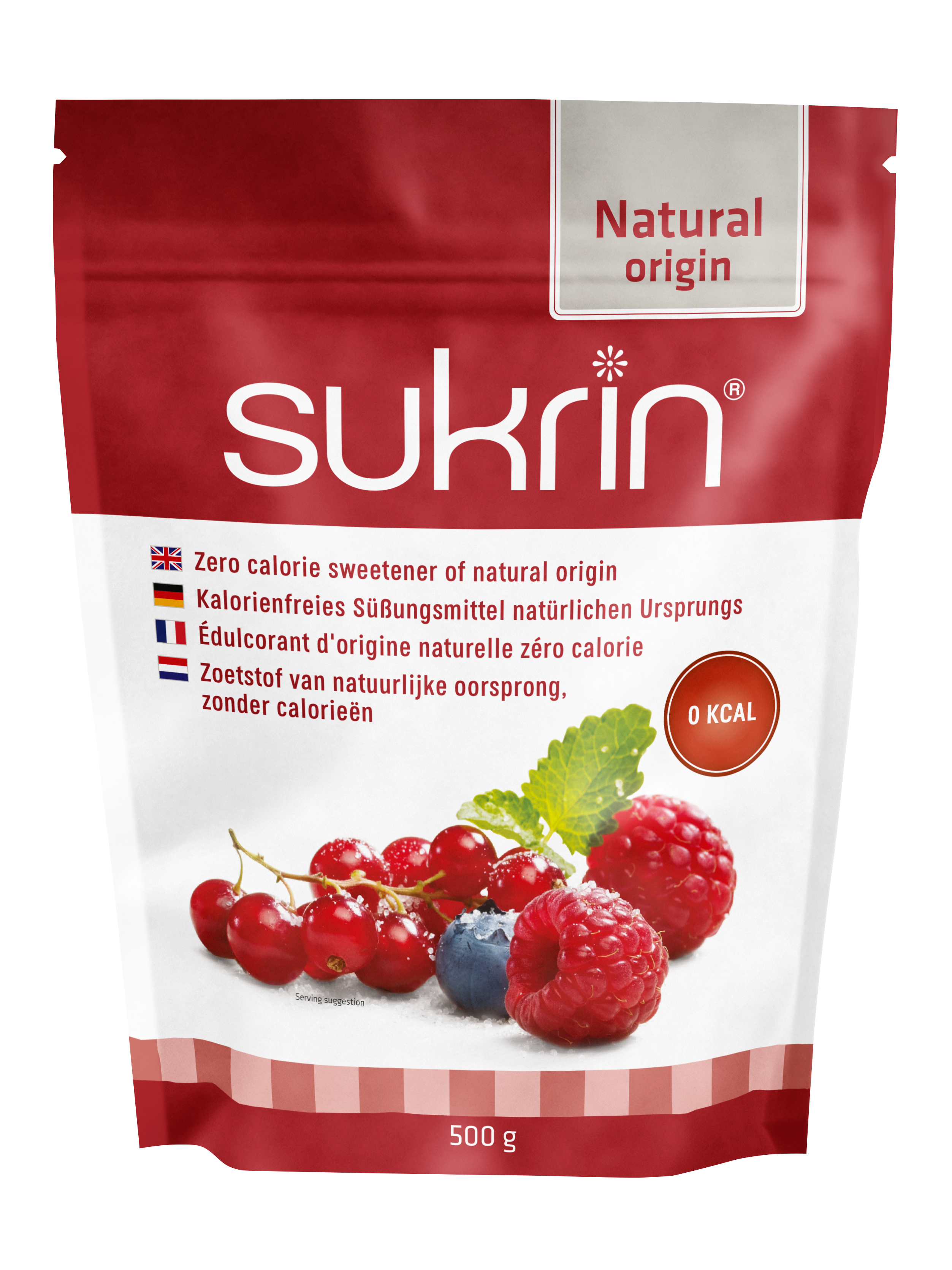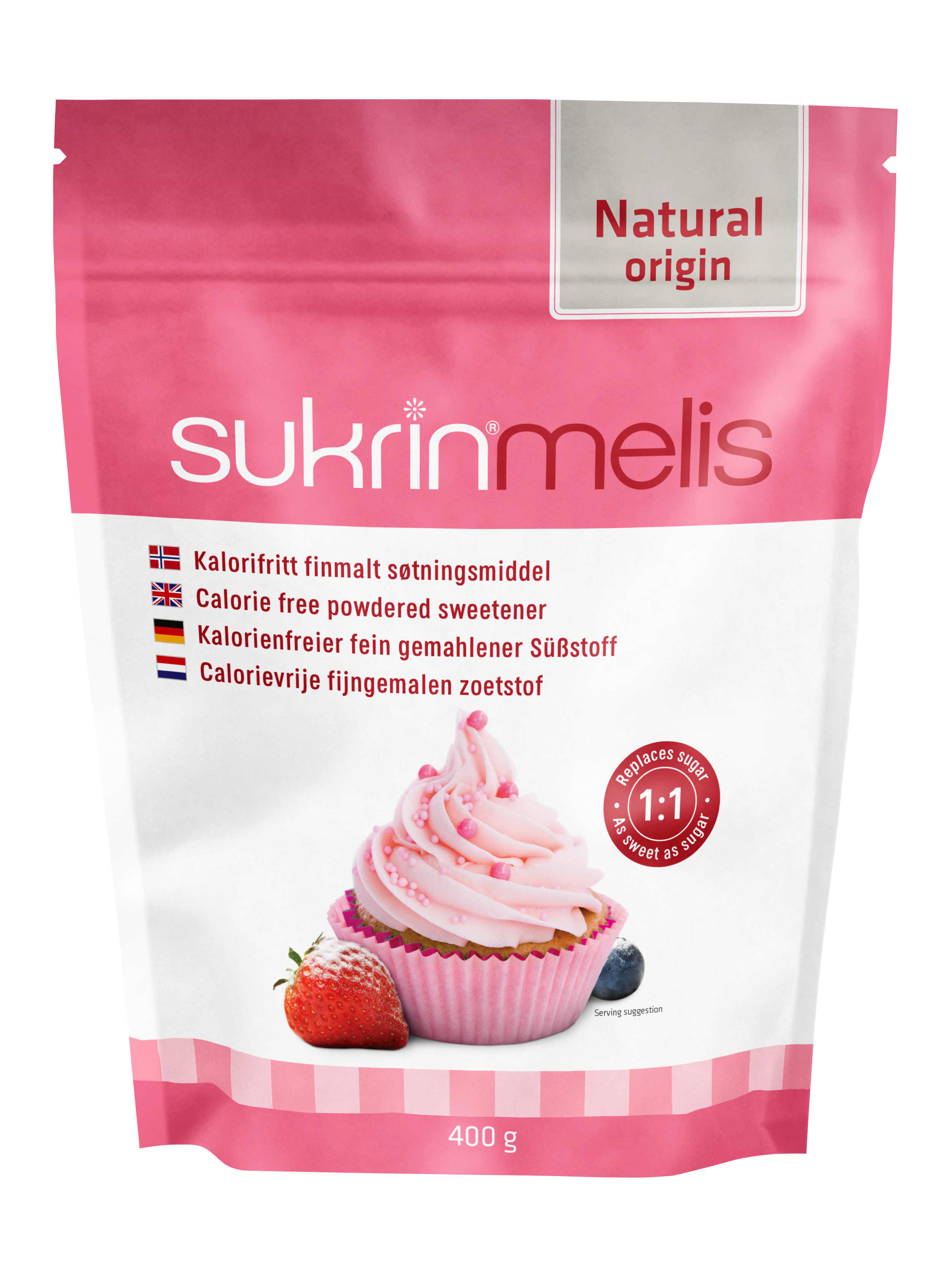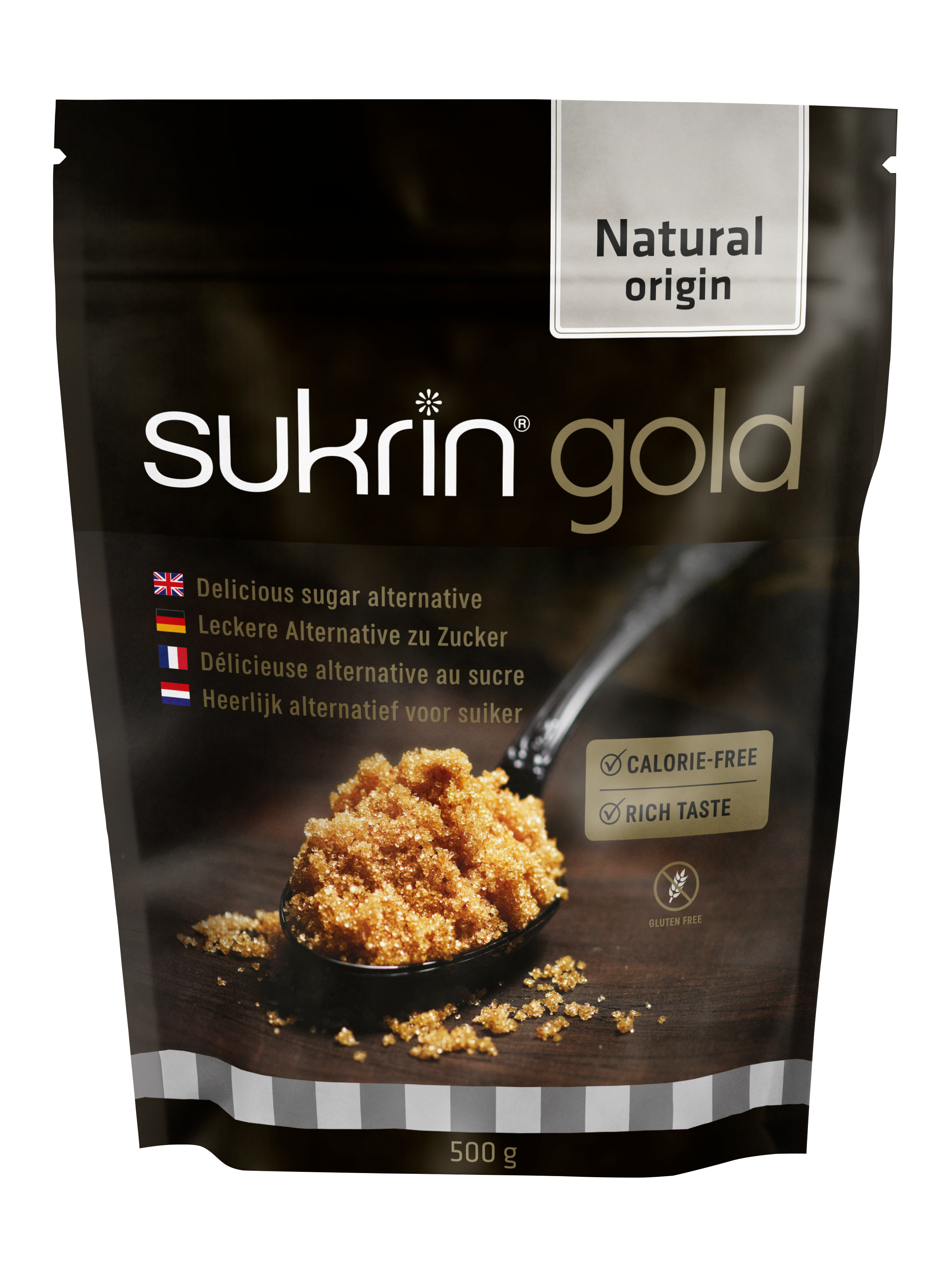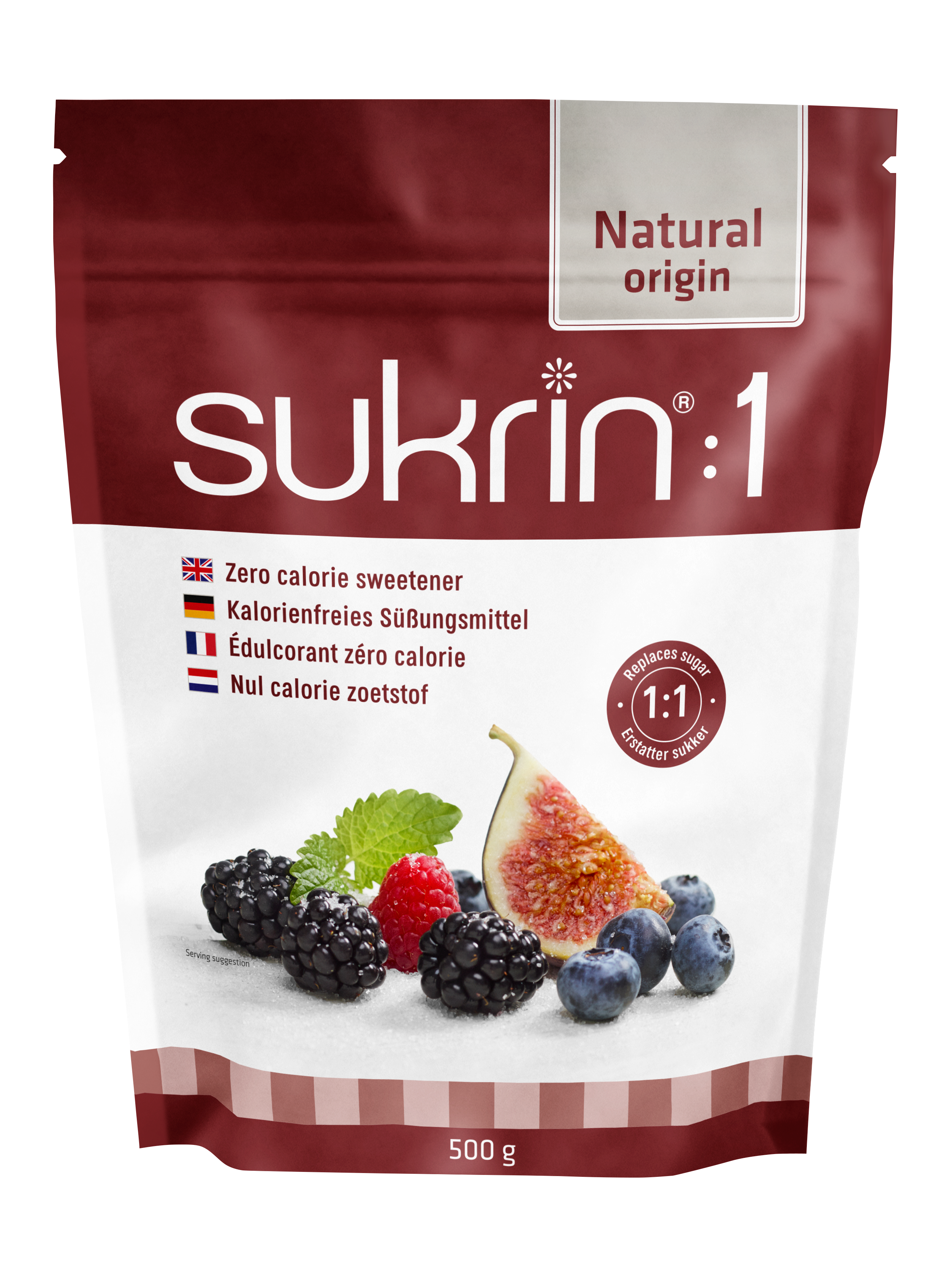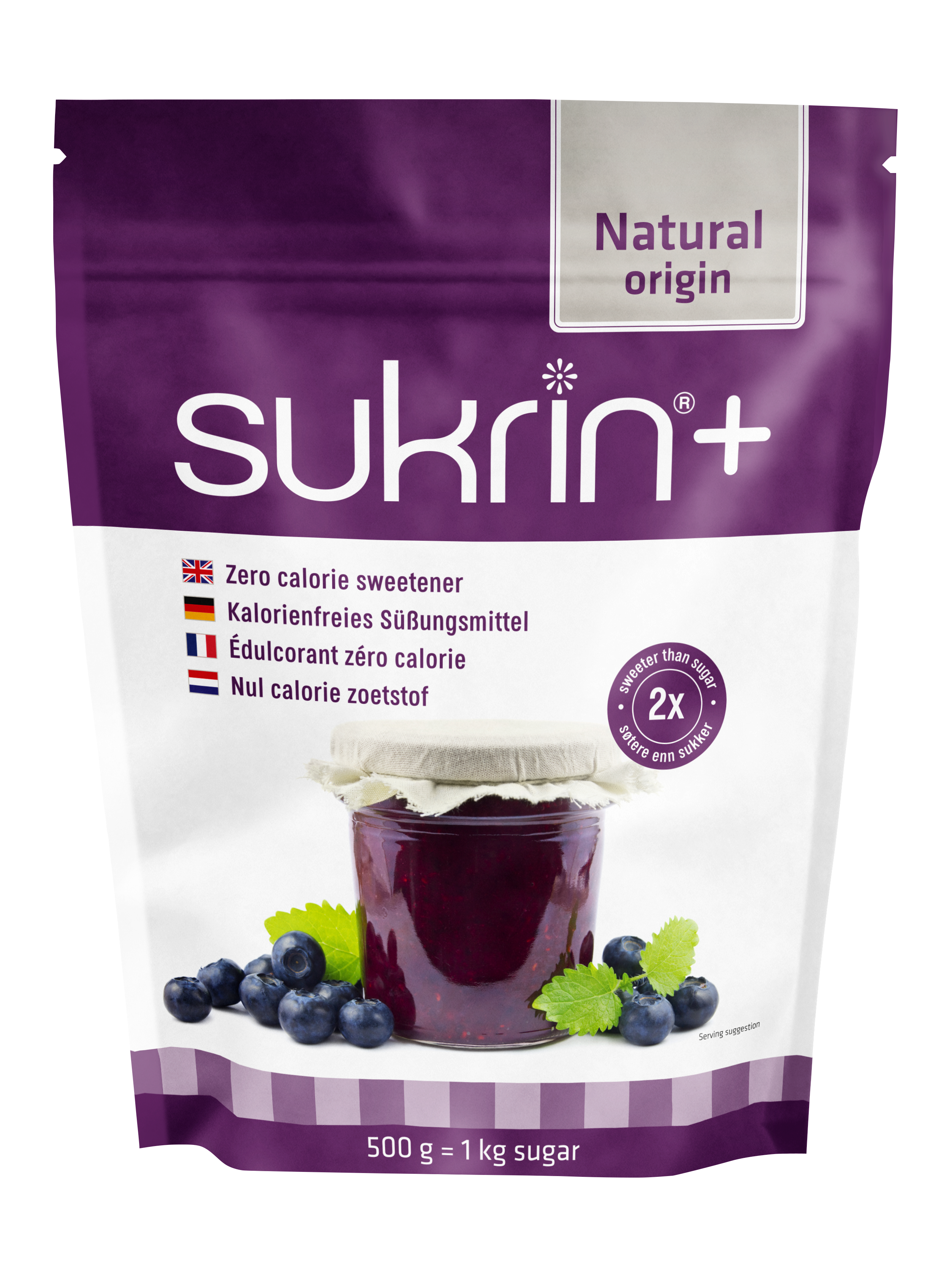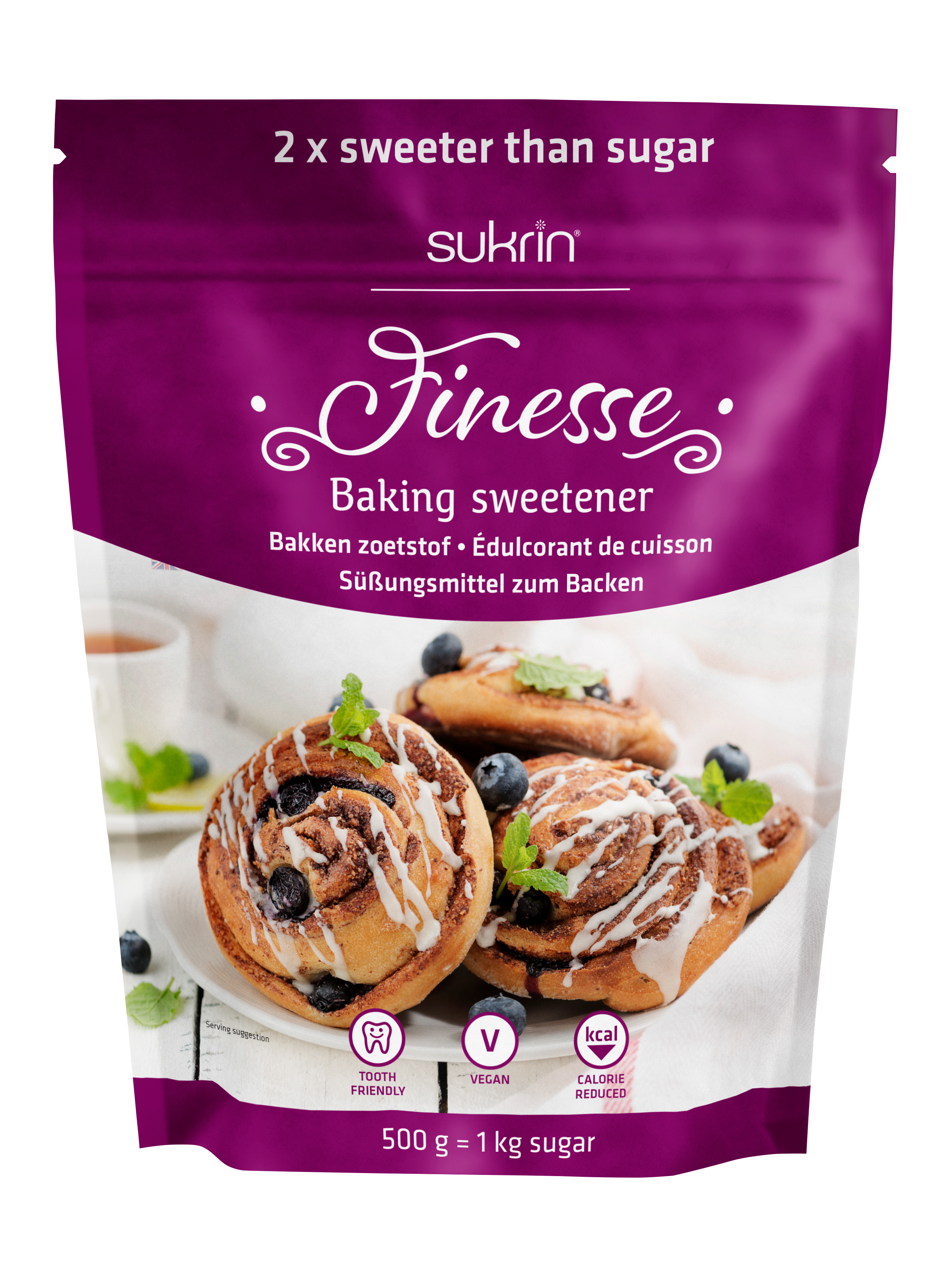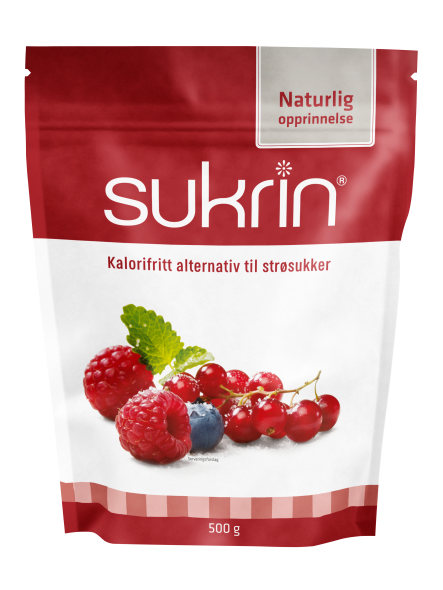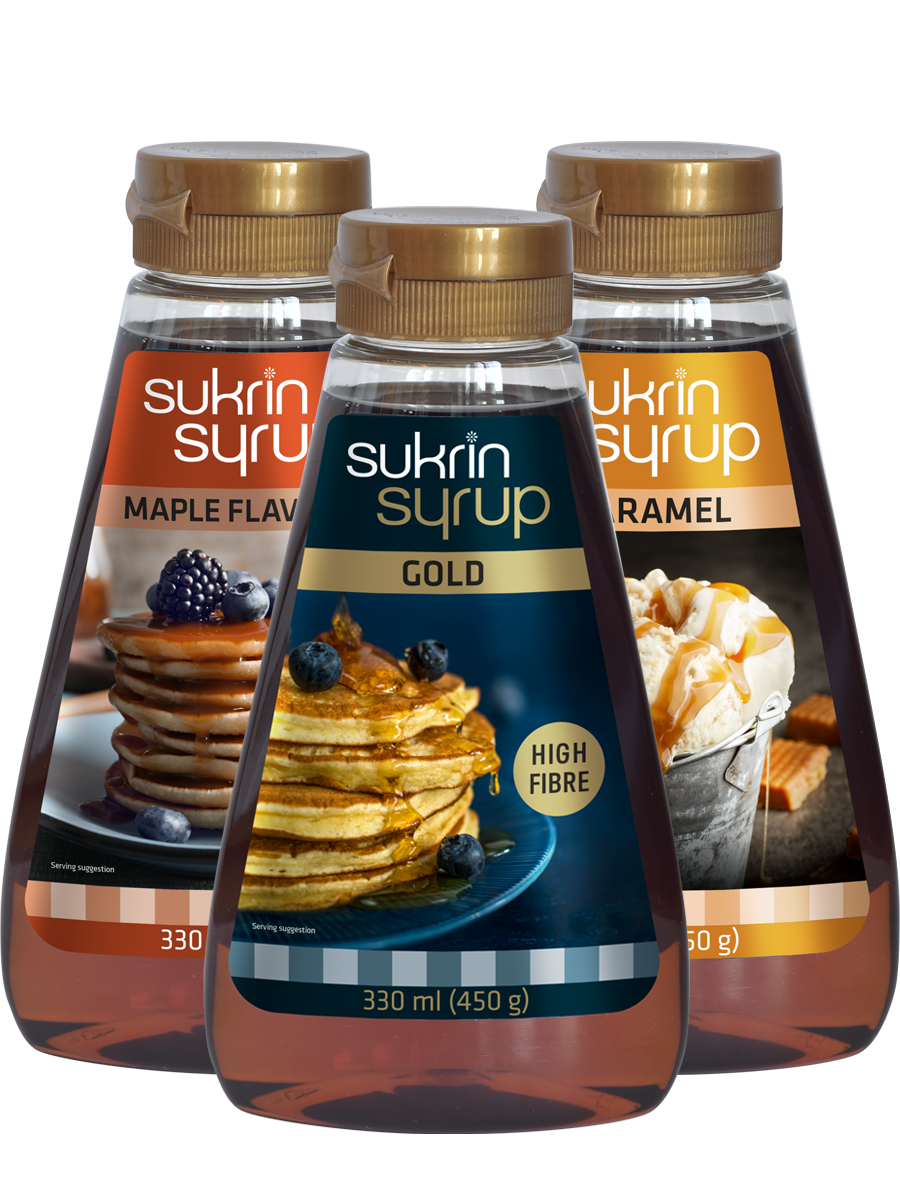Which sweetener is best suited for your needs?
Sukrin
Positives: 0 calories. 0 carbohydrates. Natural origin and manufacturing process.
Unique properties: Same consistency, flavour and volume as sugar.
Degree of sweetness: Approx. 70% of sugar
Areas of use: Any time you want to use table sugar: over berries, fruit, porridge, yoghurt, cottage cheese, cereals and similar. In baking recipes with a fairly low sugar content (up to 20% of the total contents).
Drawback: When used in too high a quantity, the flavour may be experienced as having a cooling effect/metallic. Baked goods made with an excessive amount may turn out dry and hard. Should not be used in a greater quantity than 20% of the recipe’s total content.
Tip: Sukrin works very well in combination with other sweeteners. If the amount of sugar you wish to replace exceeds 20% of the total content you can mix Sukrin with Finesse, Stevia, SukrinSirup or whichever sweetener you prefer or have at hand. If you, for example, mix Sukrin with regular sugar half and half you’ve also made a good and healthy reduction.
SukrinMelis
Positives: 0 calories. 0 carbohydrates. Natural origin and manufacturing process.
Unique properties: Easily dissolved, and doesn’t give the crunchy feeling of table sugar.
Degree of sweetness: Approx. 100% of sugar.
Areas of use: As Sukrin icing is finely ground it’s easily dissolved, even in foods and drinks that aren’t heated, such as yoghurt, cold drinks, marzipan, creams, icings and similar. It can also be used, of course, in recipes that are heated.
Drawback: When used in too high a quantity, the flavour may be experienced as having a cooling effect/metallic. Baked goods made with an excessive amount may turn out dry and hard. Should not be used in a greater quantity than 20% of the recipe’s total content.
Tip: Sukrin icing works very well in combination with other sweeteners. If the amount of sugar you wish to replace exceeds 20% of the total content you can mix Sukrin icing with Finesse, Stevia, SukrinSirup or whichever sweetener you prefer or have at hand. If you, for example, mix Sukrin with regular sugar half and half you’ve also made a good and healthy reduction.
Sukrin Gold
Positives: Very few calories (8 kcal/100 g). Natural origin and manufacturing process.
Unique properties: Beautiful, golden colour, melts on the tongue, has a sweeter, rounder and richer flavour than original Sukrin.
Degree of sweetness: The same as sugar/brown sugar.
Areas of use: Any time you would have used white or brown sugar. Perfect over berries, cereals, porridge, yoghurt, in coffee, tea, desserts and more.
Drawback: When used in too high a quantity, the flavour may be experienced as having a cooling effect/metallic. Baked goods made with an excessive amount may turn out dry and hard. Should not be used in a greater quantity than 20% of the recipe’s total content.
Tip: Sukrin Gold has a golden colour and looks beautiful when sprinkled over cottage cheese, yoghurt and ice cream or as a final touch over cakes and desserts.
Sukrin:1
Positives: 0 calories. 0 carbohydrates. Natural origin and manufacturing process.
Unique properties: Same degree of sweetness, consistency, flavour and volume as sugar.
Degree of sweetness: Approx. 100% of sugar.
Areas of use: Any time you want to use table sugar: over berries, fruit, porridge, yoghurt, cottage cheese, cereals and similar. In baking that don’t require too much sugar (up to 20% of the recipe’s total contents).
Drawback: When used in too high a quantity, the flavour may be experienced as having a cooling effect/metallic. Baked goods made with an excessive amount may turn out dry and hard. Should not be used in a greater quantity than 20% of the recipe’s total content.
Tip: Sukrin:1 works very well in combination with other sweeteners. If the amount of sugar you wish to replace exceeds 20% of the total content you can mix Sukrin:1 with Finesse, Stevia, SukrinSirup or whichever sweetener you prefer or have at hand. If you, for example, mix Sukrin with regular sugar half and half you’ve also made a good and healthy reduction.
Sukrin+
Positives: 0 calories, 0 carbohydrates. Natural origin and manufacturing process.
Unique properties: Twice as sweet as sugar and can thus replace a larger amount of sugar without reaching the limitations you may face with Sukrin and SukrinMelis.
Degree of sweetness: Twice as sweet as sugar.
Areas of use: In baking recipes that require a higher degree of sweetness than what’s achievable with original Sukrin. (Where sugar constitutes up to 40% of the recipe’s total content).
Drawback: Only fills half the volume of recipes originally requiring sugar. The taste of pure Sukrin+ may be experienced as having a slightly intense sweetness, since it’s twice as sweet as sugar.
Finesse baking sweetener
Positives: Only 20% of the calories the equivalent amount of sugar would give. GI of just 1.
Unique properties: Well-suited for baking. Exceptionally close to sugar in flavour, and no aftertaste or cooling effect.
Degree of sweetness: Twice as sweet as sugar.
Areas of use: In cakes, pastries, and other baked goods.
Drawback: Only fills half the volume of sugary recipes’ sugar amounts. Contains a small amount of sucralose. Contains a fairly high amount of fibre, which comes with a slight risk of digestive discomfort.
Sukrin Syrup
Positives: Only 2% sugar content and 49% fibre content.
Unique properties: Amazing taste and syrup consistency.
Degree of sweetness: As sweet as sugar/syrup.
Areas of use: Ideal for drizzling over yoghurt, cottage cheese, porridge, pancakes, ice cream, desserts, berries etc. Use the syrup in baking and cooking where you would otherwise use honey or syrup. For example in homemade marinades and dressings.
Sukrin Syrup is excellent to give your cookies and biscuits a soft centre and crispy crust. It is also an amazing ingredient in home-baked bars, as it provides sweetness, a perfectly smooth consistency and a good source of fibre.
Drawback: Can cause temporary digestion discomfort and have a laxative effect when consumed in high amounts.
Tip: Sukrin Syrup is brilliant in combination with other sweeteners. Combined with Sukrin, it will remove the cooling effect Sukrin may produce in high doses.
Stevia drops
Positives: 0 calories, 0 carbohydrates.
Unique attributes: Flavoured Stevia drops both sweeten and add flavour simultaneously.
Degree of sweetness: 5 drops is equal to approx. 1 tsp (5 g) of sugar
Areas of use: Easily adds both sweetness and aroma to coffee, tea, smoothies, ice cream, yoghurt, creams, cakes, desserts and similar.
Drawback: Doesn’t add volume. Some experience Stevia as giving off a slightly bitter aftertaste, reminiscent of liquorice.
Tip: Make sure you don’t use too many Stevia drops. Experiment and start off with a bit less than what you think you’ll need. 6 drops equal to about 1 tsp of sugar in sweetness, but the flavour will vary depending on what you use the drops for. Stevia is excellent in combination with other sweeteners, like Sukrin, for example, to add volume.
